9 Best Winter Plants to Brighten Your Winter Garden
Written by Ivy
Nov 05 2021
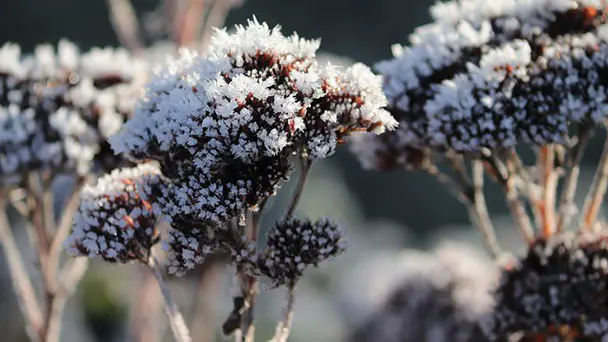
This guide introduces 10 best winter plants to bright your winter garden. In our impression, winter is mostly the image of cold and withering of all things. The weather is cold and many plants are difficult to grow in winter, so many friends who like raising flowers don't often raise flowers in winter. They are afraid that they will die if they are not careful. However, although it is difficult for plants to grow in winter, some plants have strong cold tolerance and are suitable for planting and growing in winter.
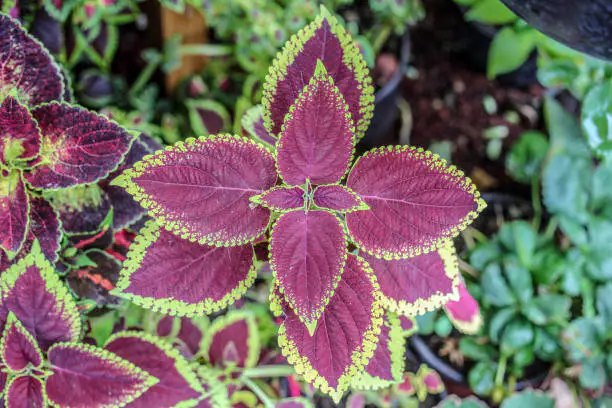 At the thought of the gorgeous colors of Plectranthus Scutellarioides, we can also guess that it must love the sunshine very much. Otherwise, how does it show its bright colors? In winter, it's best to put it indoors where you can receive plenty of sunshine. Like other plants, plectranthus scutellarioides has little demand for nutrients in winter. If we want to apply it, we can choose the fertilizer with more phosphorus, which can effectively maintain the freshness of the leaves. Do not overuse the fertilizer with a lot of nitrogen, because it will darken the leaves of this winter plant.
At the thought of the gorgeous colors of Plectranthus Scutellarioides, we can also guess that it must love the sunshine very much. Otherwise, how does it show its bright colors? In winter, it's best to put it indoors where you can receive plenty of sunshine. Like other plants, plectranthus scutellarioides has little demand for nutrients in winter. If we want to apply it, we can choose the fertilizer with more phosphorus, which can effectively maintain the freshness of the leaves. Do not overuse the fertilizer with a lot of nitrogen, because it will darken the leaves of this winter plant.
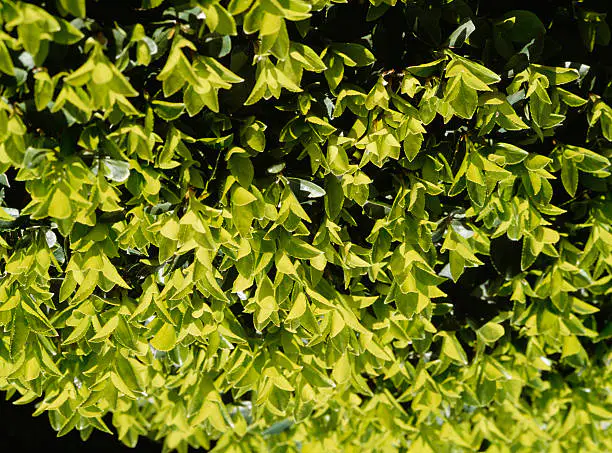 Wintercreeper Euonymus belongs to subtropical tree species and is relatively cold resistant. It has strong adaptability and is suitable for growing in winter. wintercreeper euonymus grows vigorously and is evergreen all year round. Its leaves turn red in autumn. It is a common ground covering plant in the courtyard, dotted with wall corners, rocks, old trees, etc. Wintercreeper Euonymus has weak climbing ability and is not suitable for three-dimensional greening (variant crawling spear can). If this winter plant is shaped to become a cliff bonsai, it will be placed on the desk and several shelves to add green to the room.
Wintercreeper Euonymus belongs to subtropical tree species and is relatively cold resistant. It has strong adaptability and is suitable for growing in winter. wintercreeper euonymus grows vigorously and is evergreen all year round. Its leaves turn red in autumn. It is a common ground covering plant in the courtyard, dotted with wall corners, rocks, old trees, etc. Wintercreeper Euonymus has weak climbing ability and is not suitable for three-dimensional greening (variant crawling spear can). If this winter plant is shaped to become a cliff bonsai, it will be placed on the desk and several shelves to add green to the room.
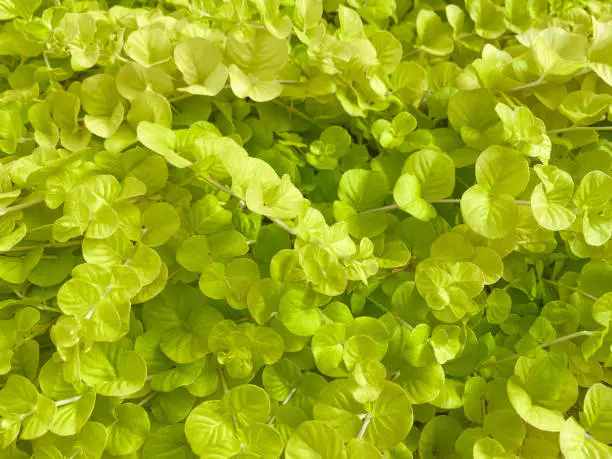 Creeping Jenny can be eaten as a vegetable and is non-toxic. Lysimachia has strong adaptability and lax requirements for soil. This winter plant is a shallow root crop with weak root absorption capacity. During growth, the supply of fertilizer and water should be strengthened in order to obtain thick and tender green leaves. After sowing this winter plant, we should cover it with thin soil and often spray water to keep the soil moist.
Creeping Jenny can be eaten as a vegetable and is non-toxic. Lysimachia has strong adaptability and lax requirements for soil. This winter plant is a shallow root crop with weak root absorption capacity. During growth, the supply of fertilizer and water should be strengthened in order to obtain thick and tender green leaves. After sowing this winter plant, we should cover it with thin soil and often spray water to keep the soil moist.
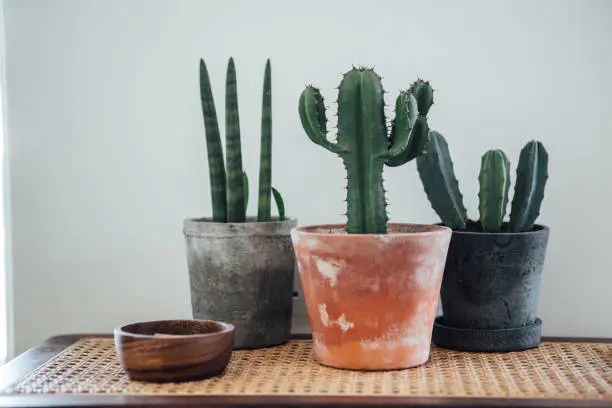 In winter, we should let the cactus receive more light as much as possible. Sufficient light is not only conducive to the photosynthesis of the plant, but also improve the temperature of the plant and keep warm. In the case of indoor heating, a little water can be given to maintain the normal growth of cactus. In the room without heating, you can keep the soil dry without watering, and make the winter plant endure a low temperature of about 5 ℃. Cactus is drought resistant and not picky about the maintenance environment It can also purify indoor air and release fresh oxygen at night. Like air fresheners, cactus fruits also contain elements beneficial to health.
In winter, we should let the cactus receive more light as much as possible. Sufficient light is not only conducive to the photosynthesis of the plant, but also improve the temperature of the plant and keep warm. In the case of indoor heating, a little water can be given to maintain the normal growth of cactus. In the room without heating, you can keep the soil dry without watering, and make the winter plant endure a low temperature of about 5 ℃. Cactus is drought resistant and not picky about the maintenance environment It can also purify indoor air and release fresh oxygen at night. Like air fresheners, cactus fruits also contain elements beneficial to health.
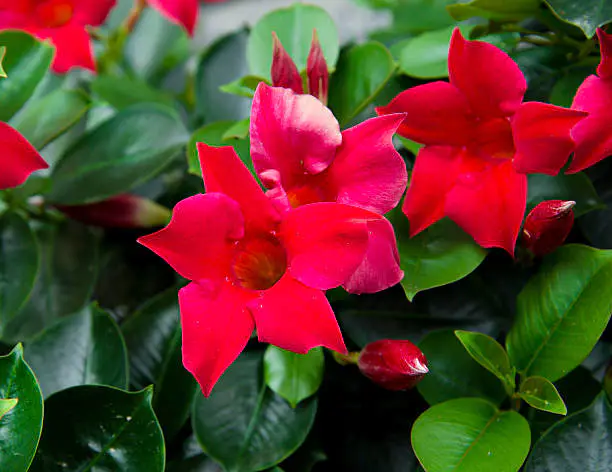 If we want to make Mandeville spend the winter safely, the ambient temperature must be at least above 10 ℃, so as to create a warm growth environment for Mandeville and help it grow normally in winter. In winter, the growth rate of this winter plant will be significantly slower than that in other seasons, so its demand for water will also be relatively low. At this time, we should control the times of watering this winter plant and do not give it too much water.
If we want to make Mandeville spend the winter safely, the ambient temperature must be at least above 10 ℃, so as to create a warm growth environment for Mandeville and help it grow normally in winter. In winter, the growth rate of this winter plant will be significantly slower than that in other seasons, so its demand for water will also be relatively low. At this time, we should control the times of watering this winter plant and do not give it too much water.
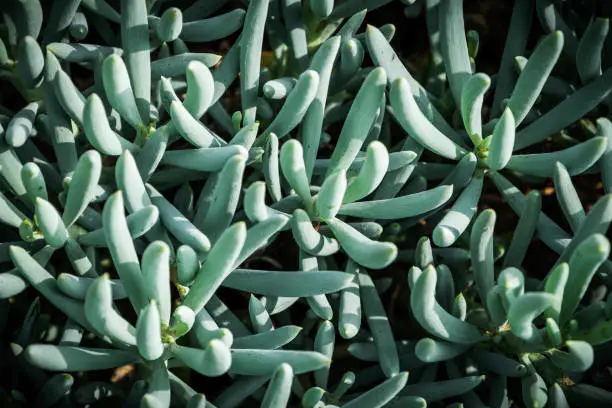 Sedum hispanicum likes a sunny environment, and the leaves will turn golden yellow only after drying more. There is less sunshine in winter. Make full use of the light in the daytime. If the light is insufficient, fill in the light with fluorescent lamps.
Sedum hispanicum likes a sunny environment, and the leaves will turn golden yellow only after drying more. There is less sunshine in winter. Make full use of the light in the daytime. If the light is insufficient, fill in the light with fluorescent lamps.
Sedum hispanicum can survive in semi shade environment, but the plant type is loose, which affects the ornamental. Moreover, insufficient light will cause the plant of this winter plant to grow excessively, which will lengthen the distance between leaves, look loose and ugly, and the plant growth is weak, which is easy to cause diseases such as black rot.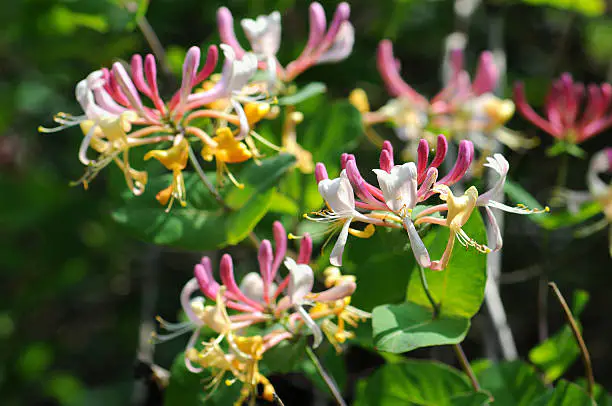 Honeysuckle can be planted indoors in winter, but don't put it in the heating room. Honeysuckle itself has a certain cold resistance. If it is placed in the heating room, the growth will resume in advance at high temperature. In this way, nutrients will continue to be consumed in winter, which is unfavorable to the germination and flowering of the next year. It is best for us to put this winter plant in an environment with a temperature of about 5 degrees. It will not be frostbitten, but can still maintain a green state, and will not resume growth in advance. It will germinate normally when the temperature is stable.
Honeysuckle can be planted indoors in winter, but don't put it in the heating room. Honeysuckle itself has a certain cold resistance. If it is placed in the heating room, the growth will resume in advance at high temperature. In this way, nutrients will continue to be consumed in winter, which is unfavorable to the germination and flowering of the next year. It is best for us to put this winter plant in an environment with a temperature of about 5 degrees. It will not be frostbitten, but can still maintain a green state, and will not resume growth in advance. It will germinate normally when the temperature is stable.
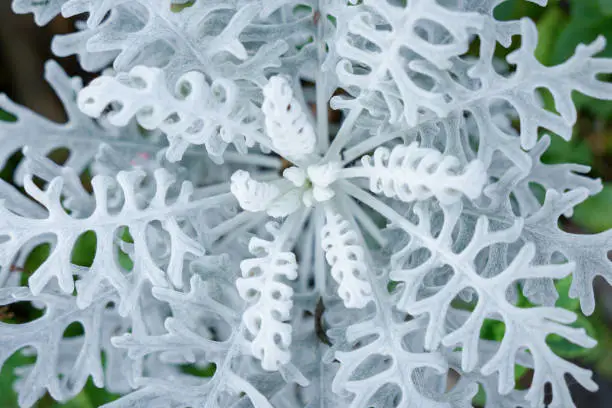 Dusty Miller is a cold resistant ornamental plant, which can survive in the winter environment of several degrees below zero. However, the state of dusty Miller under ground cultivation and maintenance will become worse, because the ornamental properties of the leaves will be worse when exposed to the wind and sun outdoors. Usually when we plant silver leaf chrysanthemum, the soil we choose must be loose and breathable enough. Its roots are filiform. If the soil is often wet, it is easy to cause rhizome rot. We need to water the potted this winter plant frequently to ensure that the basin soil is slightly moist, but it will not make the basin soil often stagnant or excessively wet.
Dusty Miller is a cold resistant ornamental plant, which can survive in the winter environment of several degrees below zero. However, the state of dusty Miller under ground cultivation and maintenance will become worse, because the ornamental properties of the leaves will be worse when exposed to the wind and sun outdoors. Usually when we plant silver leaf chrysanthemum, the soil we choose must be loose and breathable enough. Its roots are filiform. If the soil is often wet, it is easy to cause rhizome rot. We need to water the potted this winter plant frequently to ensure that the basin soil is slightly moist, but it will not make the basin soil often stagnant or excessively wet.
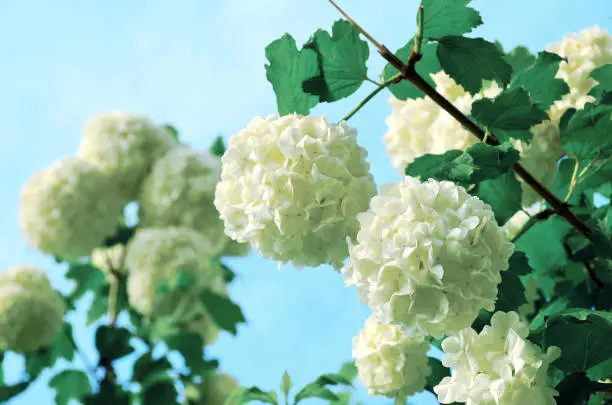 Chinese Snowball Viburnum is a very cold resistant deciduous shrub. Its flowering period is from January to March. In winter, we can't see the leaves of chinese snowball Viburnum. We can only see the bright pink flowers with fragrance. This winter plant likes plenty of sunshine. We should maintain good and fertile soil drainage.
Chinese Snowball Viburnum is a very cold resistant deciduous shrub. Its flowering period is from January to March. In winter, we can't see the leaves of chinese snowball Viburnum. We can only see the bright pink flowers with fragrance. This winter plant likes plenty of sunshine. We should maintain good and fertile soil drainage.
Read Next:
10 Best Winter Vegetables that Improve Your Health
Best 15 Winter Flowers for Winter Garden
1. Plectranthus Scutellarioides2. Wintercreeper Euonymus3. Creeping Jenny4. Cactus5. Mandevilla6. Sedum Hispanicum7. Honeysuckle8. Dusty Miller9. Chinese Snowball Viburnum
1. Plectranthus Scutellarioides

2. Wintercreeper Euonymus

3. Creeping Jenny

4. Cactus

5. Mandevilla

6. Sedum Hispanicum

Sedum hispanicum can survive in semi shade environment, but the plant type is loose, which affects the ornamental. Moreover, insufficient light will cause the plant of this winter plant to grow excessively, which will lengthen the distance between leaves, look loose and ugly, and the plant growth is weak, which is easy to cause diseases such as black rot.
7. Honeysuckle

8. Dusty Miller

9. Chinese Snowball Viburnum

Read Next:
10 Best Winter Vegetables that Improve Your Health
Best 15 Winter Flowers for Winter Garden
Latest Updated
- Benefits of Bugleweed - 7 Science-backed Health Benefits
- Bugleweed Dangers & Side Effects - Is It Poisonous?
- How to Plant Evergreen Trees - What You Should Know
- When to Plant Evergreens - Grow Guide for Evergreen Trees
- 12 Wonderful Evergreen Shrubs for Your Garden
- 12 Popular Evergreen Plants with Pictures for Beginners
- When And How To Prune A Lilac Bush Like a Pro
- How to Grow & Care for Lilac Vine (Hardenbergia Violacea)
- Japanese Lilac Tree (Syringa Reticulata) Care & Propagation Guide
- Shumard Oak Pros and Cons - What to Know
Popular Articles
- Winter maintenance of Antirrhinum Majus
- How to Grow Terminalia Mantaly Tree
- How to Grow and Care for Crossostephium Chinense
- How to grow Antirrhinum Majus in spring
- Peristeria Elata (Dove Orchid) Profile: Info & Care Guide
- Underwatered Snake Plant (Sansevieria Trifasciata) - Signs And How To Fix
- How to Care for Brazilian Jasmine Plant (Mandevilla Sanderi)
- How to Grow & Care for Graptopetalum Purple Delight in Summer
- Rosa Chinensis (China Rose): Plant Growing & Care Tips
- How to Care for Baby Sun Rose (Aptenia Cordifolia)